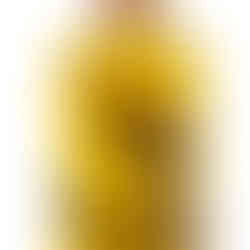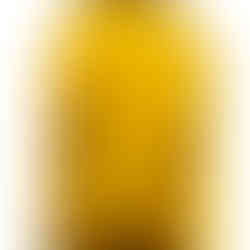The Big Fat Series Part II - The Story of Trans Fats
- Vicky Sham
- May 28, 2019
- 5 min read
Updated: Nov 20, 2020
From Animal Fats to Margarine and Crisco
Given fats from sustainably and properly raised animals (such as grass-fed ghee, organic butter) are one of the most nutrient dense foods, how did we go from savouring animal fats to embracing industrially processed partially hydrogenated vegetable oils (aka trans fats) like Crisco and margarine?
It all started with a drought in the late 19th century and the birth of margarine.

Margarine Was Created As A Poor Man's Food
Margarine was created by a French chemist called Hippolyte Mège-Mouriès in 1869. It began with a butter shortage due to a drought across Europe. The dry weather meant there was not enough grass for grazing, so the cows were too malnourished to produce sufficient fat in their milk for butter. The creation of margarine was a response to a request by the Emperor Napoleon III to find a cheap alternative to butter, in order to feed the army and the poor.
Mège-Mouriès' margarine was made of beef fat and skimmed milk. The first margarine was nutritionally inferior to butter, but at least it didn't contain any man-made trans fats. Butter remained a rich man's food. Margarine was created as a poor man's food substitute.

Margarine - From Beef Fat to Vegetable Oils
By 1950s, margarine was almost completely made out of vegetable oils, thanks to the invention of hydrogenation of vegetable oils. Hydrogenation turned liquid vegetable oils into shelf-stable, semi-solid margarine, a much cheaper cooking fat than lard or butter. Continued food shortages in the 1930s and butter rationing during WWII provided the incentive for scientists and food manufacturers to seek cheaper alternatives to butter and animal fats.
I Can't Believe It's Not Butter
Margarine became very popular because its texture and taste served as an excellent substitute for butter. It was used as a "low-fat" buttery spread, as well as for cooking and baking. By the 1980s, many people thought polyunsaturated vegetable fats like margarine were far healthier than artery-clogging saturated animal fats. Of course by about 1990s, we realised that trans fats from such hydrogenation process were the true culprit for the higher risk of heart disease and stroke.
Trans Fat Free Emulsifiers
Nowadays, many manufacturers can make low-fat and trans-fat free margarines using emulsifiers. Without even going into the good and bad of emulsifiers, the question is why do we want low-fat? There is absolutely nothing wrong with nutrient-dense saturated fats like grass-fed ghee and organic butter. For vegetarians and vegans, cold-pressed, organic and extra virgin olive, canola, flaxseed, grapeseed, sesame oils are also highly nutritious. Careful to get specifically cold-pressed and organic oils that are stored in dark bottles but not any highly processed oils in plastic bottles. They are certainly more expensive than margarine, but absolutely worth paying for your health.
So, before we see why trans fats are bad for you, let us visit the story of another partially hydrogenated vegetable oil, Crisco.
Crisco - Was it Soap or Food
In 1910, Procter & Gamble, a soap manufacturer, filed a patent application for the hydrogenation of vegetable oils. A year later Crisco was introduced as a shortening made entirely from cottonseed oil (originally a toxic by-product from cotton farming). A series of successful marketing campaigns including free recipes, cookbooks and advertising convinced the world that Crisco was a healthier, cheaper alternative to lard. For decades Crisco became one of the most popular and versatile cooking oils across the US and beyond. What was originally meant to be a soap product was trumpeted as a healthy vegetarian alternative to animal fats.
The Dangers of Trans Fats
By about 1990s, the health risks of margarine and Crisco became apparent. Many scientific studies demonstrated the link between partially hydrogenated oils (trans fats) consumption and coronary heart disease. Trans fats are bad because they raise the bad low density lipoprotein (LDL) cholesterol and lower the good high-density lipoprotein (HDL) cholesterol, which in turn increases the risk of heart disease.

Where Do We Encounter Trans Fats
Trans fats are commonly found in margarine, Crisco, shortening, cake baking mixes and numerous processed and packaged foods in supermarkets. Some fast food restaurants still use hydrogenated vegetable oils for cooking, deep-frying and baking.
The following are the foods most likely to contain trans fats.
- Crisco, margarine, vegetable shortening
- fast foods such as french fries, beef burgers, deep fried snacks, fried chicken, fish and chips
- packaged and processed foods like crackers, potato chips, biscuits, cookies, cakes, frosting
- baked goods like pastries, pies, rolls
- non dairy coffee creamers
- frozen dinners such as pizzas, ice cream, frozen cakes and pies
- some microwavable popcorns.

How Can We Avoid Trans Fats
Whilst you can always try look for "hydrogenated vegetable oils" or "trans fats" on food packaging, such food labelling is not mandatory. A few countries have banned trans fats, whilst some others allow 2% to 5% of trans fat content in food products before any labelling is required. Trans fats are still hidden in many foods, so your best strategy is to avoid or limit fast foods, packaged and processed foods.
THE END OF THE BIG FAT SERIES - PART II
Some extra stuff if you want to geek out on partial hydrogenation

What Is Partial Hydrogenation
Partial hydrogenation is the process used to change liquid vegetable oils into margarine, a semi-solid with a butter-like texture perfect as an animal fat substitute. Partially hydrogenated vegetable oils also help to extend the shelf-life of processed foods such as crackers, snacks and cakes.
Saturated and Unsaturated Fatty Acids
Before we go on, some basics stuff on fatty acids. Fat molecules are long chains of hydrocarbons called fatty acids (containing 4 to 18 carbons). Saturated fatty acids are made up entirely of single bonds whereby all the carbons on the chains are saturated with hydrogens. Unsaturated fats contain one (mono-) or more (poly-) unsaturated double bonds along the hydrocarbon chains.
Unsaturated fats contain double bonds that can react with hydrogen to form single bonds, hence the name hydrogenation.

How Is Trans Fat Created
As the name partial hydrogenation suggests, the process involves adding hydrogen atoms to each of the carbons on the double bonds, turning them into single bonds (i.e. saturated). "Partial" means that not all the carbons are saturated and some double bonds remain. The fatty acids are still polyunsaturated, except that the naturally occurring 'cis' bonds are converted to 'trans' bonds.
Turning 'CIS' Liquid Oils into 'Trans' Solid Fats
Naturally occurring polyunsaturated fatty acids have a 'cis' formation, meaning the hydrogen atoms are on the same side of the carbon double bonds. "Cis" bonds produce a kinked molecular structure which explains why natural polyunsaturated fatty acids are liquids at room temperature. Fish oils, being liquid, are a good example of natural polyunsaturated fatty acids. Partial hydrogenation and conversion into 'trans' bonds result in more flattened molecular chains, and a semi-solid at room temperature.
You can see the molecular structures of these fatty acids on wikipedia.
- stearic acid, saturated fatty acid with single bonds only
- oleic acid, unsaturated fatty acid with cis bond
- elaidic acid, unsaturated fatty acid with trans bond
Further information
1. How Vegetable Oils Replaced Animal Fats In the American Diet
2. Is Butter Really Back
3. Intake of saturated and trans unsaturated fatty acids and risk of all cause mortality, cardiovascular disease, and type 2 diabetes: systematic reviews and meta-analysis of observational studies.
de Souza RJ, Mente A, Maroleanu A, Cozma AI4 Ha V, Kishibe T, Uleryk E, Budylowski P, Schünemann H, Beyene J, Anand SS.
4. Margarine
5. Replace Trans Fat - An Action Package to Eliminate Industrially-Produced Trans-Fatty Acids.

















